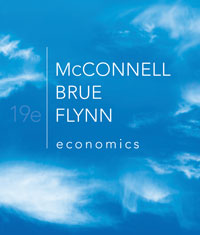1 <a onClick="window.open('/olcweb/cgi/pluginpop.cgi?it=jpg::::/sites/dl/free/0217511447/883732/ch05_q1.jpg','popWin', 'width=NaN,height=NaN,resizable,scrollbars');" href="#"><img valign="absmiddle" height="16" width="16" border="0" src="/olcweb/styles/shared/linkicons/image.gif"> (13.0K)</a> A) price M B) price B C) output G D) output H 2 A) both can be efficiently provided by private firms B) X can be efficiently provided by private firms but Y must be financed through taxes C) Y can be efficiently provided by private firms but X must be financed through taxes D) both goods must be financed through taxes 3 <a onClick="window.open('/olcweb/cgi/pluginpop.cgi?it=jpg::::/sites/dl/free/0217511447/883732/ch05_q3.jpg','popWin', 'width=NaN,height=NaN,resizable,scrollbars');" href="#"><img valign="absmiddle" height="16" width="16" border="0" src="/olcweb/styles/shared/linkicons/image.gif"> (10.0K)</a> A) $3 B) $7 C) $150 D) $350 4 A) illegal drugs B) DVD recording devices C) milk and dairy products D) secondary education 5 A) generates a positive externality and should be encouraged through subsidies B) generates a positive externality, however resources are correctly allocated in this market C) generates a negative externality and should be discouraged through taxes D) needs no government intervention. Beekeepers reap all private benefits 6 A) external costs in producing X and external benefits in consuming Y B) external benefits in producing X and external costs in consuming Y C) external benefits in producing X and consuming Y D) external costs in producing X and consuming Y 7 R and PS are the prices that Rafael and Sarah, respectively, are willing to pay for the marginal unit of a public good, rather than do without it. Rafael and Sarah are the only members of society.<a onClick="window.open('/olcweb/cgi/pluginpop.cgi?it=jpg::::/sites/dl/free/0217511447/883732/ch05_q7.jpg','popWin', 'width=NaN,height=NaN,resizable,scrollbars');" href="#"><img valign="absmiddle" height="16" width="16" border="0" src="/olcweb/styles/shared/linkicons/image.gif"> (9.0K)</a> A) 1 unit B) 2 units C) 3 units D) 4 units 8 A) production of this good creates external costs B) production of this good creates external benefits C) this good is characterized by nonrivalry and nonexcludability D) this is a "public good" 9 <a onClick="window.open('/olcweb/cgi/pluginpop.cgi?it=jpg::::/sites/dl/free/0217511447/883732/ch05_q9.jpg','popWin', 'width=NaN,height=NaN,resizable,scrollbars');" href="#"><img valign="absmiddle" height="16" width="16" border="0" src="/olcweb/styles/shared/linkicons/image.gif"> (12.0K)</a> A) A B) B C) C D) D 10 A) $1 B) $2 C) $3 D) $4





